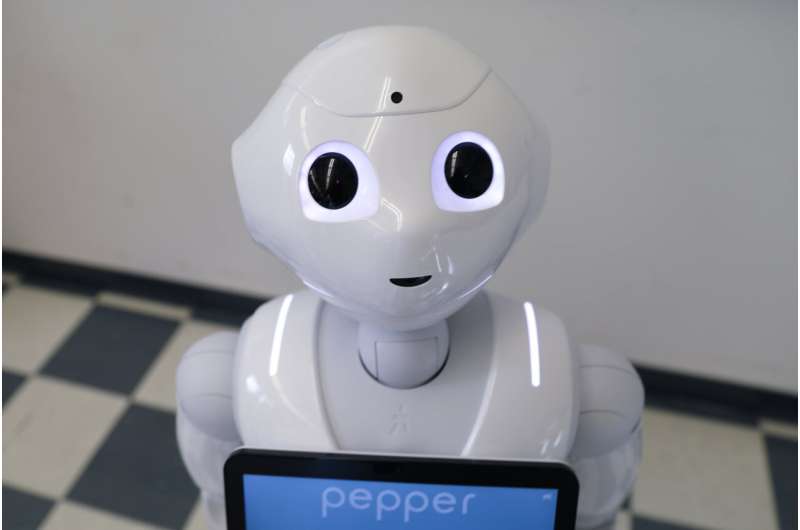Social robots may be more persuasive if they project less authority

In the future, socially interactive robots could help seniors age in place or assist residents of long-term care facilities with their activities of daily living. But will people actually accept advice or instructions from a robot? A new study from University of Toronto Engineering suggests that the answer hinges on how that robot behaves.
"When robots present themselves as human-like social agents, we tend to play along with that sense of humanity and treat them much like we would a person," says Shane Saunderson, lead author of a new paper published in Science Robotics.
"But even simple tasks, like asking someone to take their medication, have a lot of social depth to them. If we want to put robots in those situations, we need to better understand the psychology of robot-human interactions."
Saunderson says that even in the human world, there's no magic bullet when it comes to persuasion. But one key concept is authority, which can be further divided into two types: formal authority and real authority.
"Formal authority comes from your role: if someone is your boss, your teacher or your parent, they have a certain amount of formal authority," he says. "Real authority has to do with the control of decisions, often for entities such as financial rewards or punishments."
To simulate these concepts, Saunderson set up an experiment where a humanoid robot named Pepper was used to help 32 volunteer test subjects complete a series of simple tasks, such as memorizing and recalling items in a sequence.
For some participants, Pepper was presented as a formal authority figure: it was the experimenter and the only 'person' the subjects interacted with. For others, Saunderson was presented as the experimenter, and Pepper was introduced to help the subjects complete the tasks.
Each participant ran through a set of three tasks twice: once where Pepper offered financial rewards for correct answers to simulate positive real authority, another time, offering financial penalties for incorrect answers, simulating negative real authority.
Generally, Pepper was less persuasive when it was presented as an authority figure than when it was presented as a peer helper. Saunderson says that this result might stem from a question of legitimacy.
"Social robots are not commonplace today, and in North America at least, people lack both relationships and a sense of shared identity with robots," he says. "It might be hard for them to come to see them as a legitimate authority."
Another possibility is that people might disobey an authoritative robot because they feel threatened by it. Saunderson notes that the aversion to being persuaded by a robot acting authoritatively seemed to be particularly strong among male participants, who have been shown in previous studies to be more defiant to authority figures than females, and who may perceive an authoritative robot as a threat to their status or autonomy.
"A robot's social behaviors are critical to acceptance, use and trust in this type of distributive technology, by society as a whole," says Professor Goldie Nejat, Saunderson's supervisor and the other co-author on the new paper.
Nejat holds the Canada Research Chair in Robots for Society, and is a member of U of T's Robotics Institute. She and Saunderson conducted the work with support from AGE-WELL, a national network dedicated to the creation of technologies and services that benefit older adults and caregivers, as well as CIFAR.
"This ground-breaking research provides an understanding of how persuasive robots should be developed and deployed in everyday life, and how they should behave to help different demographics, including our vulnerable populations such as older adults," she says.
Saunderson says that the big take-away for designers of social robots is to position them as collaborative and peer-oriented, rather than dominant and authoritative.
"Our research suggests that robots face additional barriers to successful persuasion than the ones that humans face," he says. "If they are to take on these new roles in our society, their designers will have to be mindful of that and find ways to create positive experiences through their behavior."
More information: Persuasive robots should avoid authority: The effects of formal and real authority on persuasion in human-robot interaction, Science Robotics (2021). www.science.org/doi/10.1126/scirobotics.abd5186


















